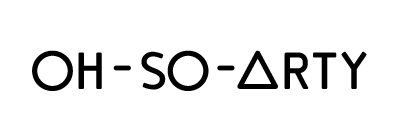Scarlett Bowman’s work addresses material culture and modern craft. Her approach is directed through craft and industry where she takes mundane, everyday materials and re- contextualises them to remove their intended use, instead creating a new, tactile and aesthetic appeal. London Art Insider, Marine Tanguy sat down with the artist to discuss her practice.
Marine Tanguy: Your works rethink our consumer's habits and very much what materials we use on a daily basis, why such an obsession?
Scarlett Bowman: Medium has always been at the core of what I do. The readymade has always carried so much in terms of weight and meaning – hence why much of the materials I use can be purchased from my local supermarket as opposed to my local art shop.
I feel like I can only express my concerns and anxieties through materials. Their once utilitarian value gives way to a more symbolic value, inviting us to think about the complex process involved in taking a raw material to its final form. To think about abundance, banality, process, labour, dependency, industrialisation, consumption, fetishism.
MT: How do you choose the materials you use to create new body of works?
SB: I always try to create a dialogue within a new work. I incorporate old and new materials, recycling them into works and thus incorporating the notion of prolific production that underlies modern life. Much of what I acquire I find or come across unintentionally. I prefer this as it provides less of a choice - I feel that, in the face of unlimited choice, certain boundaries are important to implement, else you can drive yourself mad. It’s sort of like an unconscious scavenging… I’m a serial hoarder so I am constantly collecting materials, and then I start the editing process when I feel I have enough.
MT: Do your works take inspiration from specific writings?
SB: Very much so - they change all the time. Currently; ‘Plasticity: An Art History of the Mutable’ by Dieter Rubel, ‘Reading Things: The Alibi of Use’ by Niel Cummings, ‘Materials against Materiality’ by Tim Ingold, ‘Thinking Through Craft’ by Glenn Adamson, and always ‘I, Pencil’ by Leonard Read.
MT: How far will your experimentation take you?
SB: In so much as taking my practice further, experimenting is vital. More so in terms of expanding my material use down directed trajectories, ones specific to particular industries, cultures and countries. I have an upcoming residency in Senegal that will involve a very different approach to acquiring materials, and consequently a very different aesthetic. It will be interesting to take the same concerns and approaches to a drastically different community, where resources and materials are extremely limited and harder to obtain.
- by Marine Tanguy

